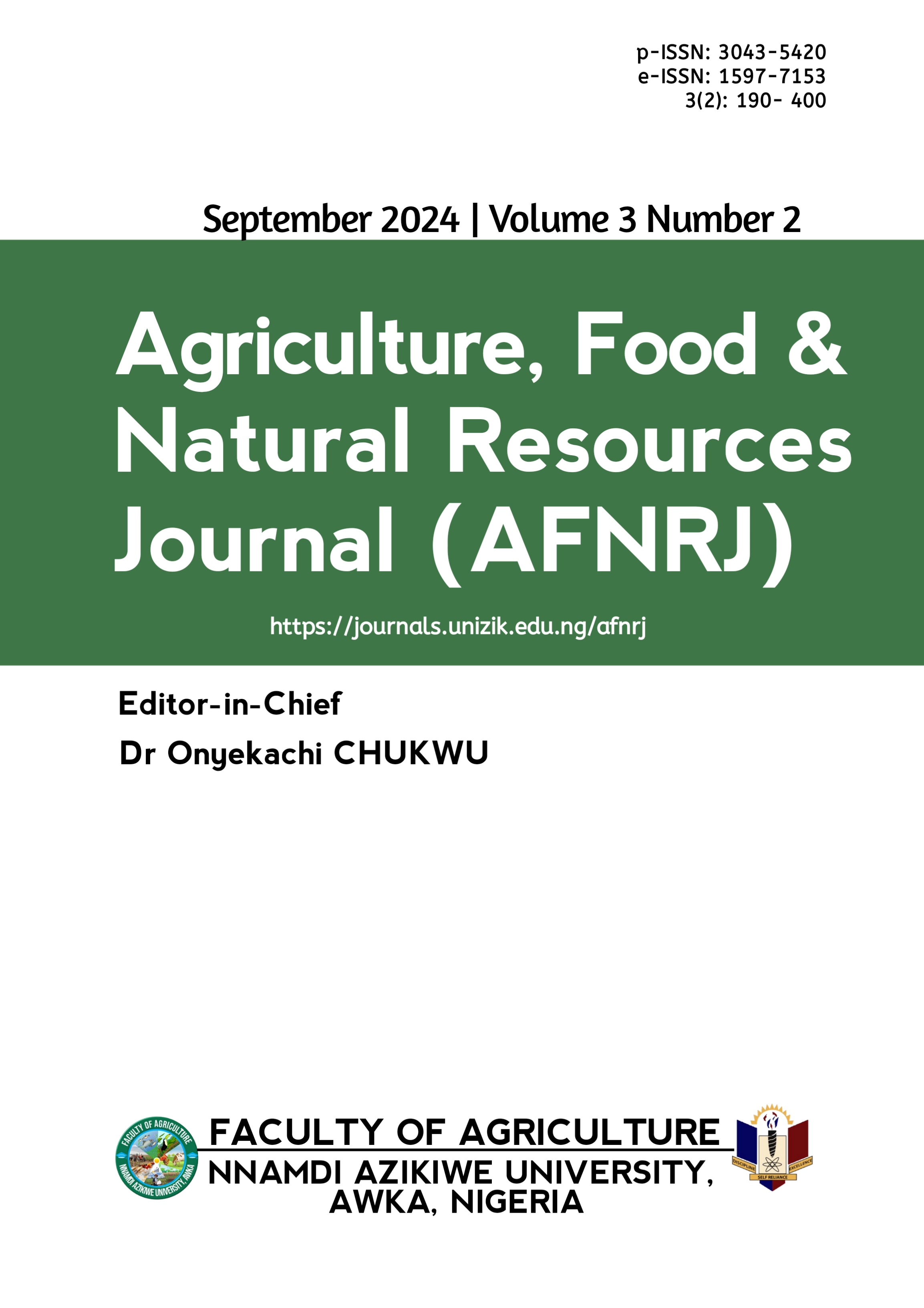Determinants of the adoption of improved packaging materials amongst tomato farmers in Ogun State, Nigeria
DOI:
https://doi.org/10.5281/zenodo.14166328Keywords:
Freshness, Sustainability, Tobit, TransportationAbstract
The sustainability of tomato freshness relies heavily on improved packaging materials, which protect tomatoes from physical damage during transportation and storage. This study examines the determinants of the adoption of improved packaging materials among tomato farmers in Ogun State, Nigeria. Using a multi-stage random sampling technique, 120 respondents were selected from three Local Government Areas known for tomato cultivation. Data were collected through structured questionnaires administered to randomly chosen farmers. Descriptive statistics (frequency, percentage, standard deviation, and mean) and a Tobit econometric model were utilized for data analysis. The Tobit model results indicated that education (p = 0.0241), farming experience (p = 0.017), group membership (p = 0.038), access to extension services (p = 0.007), distance to the nearest market (p = 0.001), and training (p = 0.095) positively correlated with the adoption and intensity of improved packaging material use. On the other hand, off-farm income (p = 0.076) negatively affected adoption, showing statistical significance at 1%, 5%, and 10% levels. In conclusion, adopting improved packaging materials can significantly enhance the quality and safety of agricultural products while reducing postharvest losses. To encourage wider adoption, targeted interventions such as training, access to affordable financing, and improved infrastructure are essential.
Downloads
Published
Issue
Section
License
Copyright (c) 2024 Toyin Rebecca ADEYEMI, Funke Iyabo OLAGUNJU, Laudia Titilola OGUNNIYI

This work is licensed under a Creative Commons Attribution 4.0 International License.
which permits unrestricted use, distribution, and reproduction in any medium, provided the original author and source are credited.
Authors retain the copyright of their published work in the AFNRJ.





